Mission diary update from Charlotte Beskow for 24 April 2014 – Ed.
Time flies when you are having fun! Two things are certain on this project… nothing is certain and you are never bored.
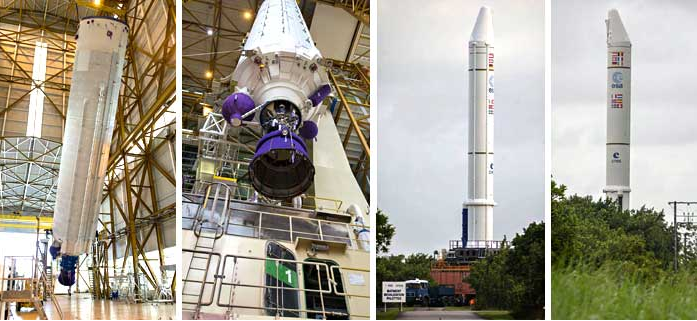
In the two photos at left, Ariane 5’s core cryogenic stage is raised for its positioning over the mobile launch table inside the Spaceport’s Launcher Integration Building – which was followed by rollout of the heavy-lift vehicle’s two large solid rocket boosters (photos at right). Credit: credit: ESA/CNES/Arianespace – Photo Optique Video du CSG
31 March – 4 April
We had a Joint Operations Working Group meeting in Toulouse. This is where people from the three control centres (Moscow, Houston and Toulouse) get together to work out the operational routines. We have done this many times now, but each flight brings its own set of changes. Coordination is paramount, so any change has to be meticulously prepared and transcribed into the various operational documents / procedures. We hold face-to-face meetings about three times each year and in between we do teleconferences. The f2f meetings are invaluable since you can resolve a number of issues during side discussions, making the plenary discussions more efficient. The agenda is always packed, but since we have worked together for many years now the discussions remain friendly (if somewhat heated from time to time).
Friday was a bit special. If all goes well, this was the last face-to-face meeting. It might well be that we do not see our Russian colleagues again! We all agreed that starting next year, we will simply have to find a way to organise reunions so that we can meet, look at our pictures and reminisce about our days with ATV. Oh well, it is too early to start thinking along those lines. We are not yet in orbit and have a whole mission ahead of us (and it keeps getting longer…).
Trying to get everyone into the group picture: There is actually one person here who is not part of the group; he is the test conductor for the final system validation test where ATV-CC (the room you see in the picture) sends commands to ATV-5 (located in Kourou) via the same NASA TDRS satellite network we will use in orbit. He was quite taken back when all of us charged in during the connectivity test with White Sands TDRS control station!
Ca y’est ! surtout ne bouge pas…
And are there any women present? Of course!! And quite a few this time…
After the minutes were signed, people starting heading to the airport, but not before we celebrated the end of this meeting (and perhaps the last JOWG) with some bubbles.
These are ‘relics’ of the previous missions: ATV-2, ATV-3 and ATV-4. I am keeping a complete set that I will sell on e-Bay at a suitable time. 🙂
Elsewhere around the globe, people were busy with other ATV activities. In Cologne (DE), 4 April marked the final week of astronaut training at the European Astronaut Centre for ESA astronaut Alexander Gerst.
He will be prime operator for ATV-5 docking when it arrives to the ISS later this year. Operator No. 2, Russian cosmonaut Alexander Skvortsov, is already on board the ISS. Gerst’s training will now be concluded in Star City, outside Moscow, before he departs for the ISS aboard a Soyuz, set for 28 May.
Meanwhile, in Kourou, the pre-mating tests had been paused. Teams were getting ready to bolt together the two portions of ATV and just had left to do the ‘pre-mating’ test.
Unfortunately, one of the electronic boxes failed the test. This meant that the cargo carrier half of ATV (the ICC) would have to be reopened and the electrical connectors checked. If we were lucky, it was just a question of a loose connector, in which case the problem would quickly be resolved with no impact on downstream activities.
5-11 April – Investigations in Kourou
Teams worked 24hrs/day in order to determine the location of the problem. No one wanted to replace the unit until it was certain the failure was inside it. Finally, the investigations concluded that this was indeed the case, so after six full days of investigations, the decision was taken to replace the problematic unit with the spare.
The replacement was done Saturday, 12 April, and on the Monday, re-testing started. Obviously, this was a setback, but these things happen and this is why we have spares. However, it certainly messed up the planning. Murphy, true to form, had waited for the start of the Easter vacations to spring his surprise on us, thus obtaining the maximum impact on everybody’s private plans.
Planners then sat down and scratched their heads, looking for smart ways to make up for lost time. Negotiations started with CSG and Arianespace to see if we could work the various holidays that are scattered throughout April and May (Easter, Whitsun, Ascension, Labour day, etc. May is a hopeless month, unless you can cut your activities into small pieces, which is not always possible in our line of work.
In the middle of the week (10 April) the system validation test (SVT) was carried out. This involved ATV-CC communicating with ATV in Kourou via NASA’s TDRS satellites in space. Special antenna horns are mounted on the roof of building S5C in Kourou and the signals led up and down to the ATV, located inside the high bay.
April 8 and onwards – Final Acceptance Review (FAR) and a few words on CoFR
At our end of the Atlantic, the Final Acceptance Review (FAR) was kicked off on 8 April. This is when the ESA team sit down and review stacks and stacks of industry documents showing that the spacecraft has been built and tested according to all specifications and that it meets all requirements. There are hundreds of documents to assess and, in the end, we end up with Certificates of Acceptance, Certificates of Conformance, and Certificates of Qualification. When the FAR is concluded (for us this will be some time in June), ownership formally passes from industry to the client (ESA). ESA then basically becomes responsible for everything that does not work. It is therefore in our interest to carefully assess these documents and spot problems (if there are any) prior to handover.

VA219 – transfer of one of two solid-fuel boosters to the BIL 23 April 2014. Credit: ESA-CNES-Arianespace/Optique video du CSG
Since ATV is such a complex project, and since the ESA team has been closely involved since the time of ATV-1, the task of assessing tests and test results is something we have been doing throughout the production phase. Our teams participate to the tests both in Europe and in Kourou, we go through the as-runs, we check all system anomalies and we sit in on all major non-conformance meetings so the documents that are dumped on us these coming weeks are not really new to us. Luckily, we also have support from ESA colleagues outside the ATV project (this is standard procedure in ESA. It is easy to become ‘blind’ when you are too close to the work).
The FAR is ESA business, but in parallel we have the CoFR process.
CoFR stands for ‘Certificate of Flight Readiness’, and this is a process that is applied for the ISS. The objective is to show the ISS partners (and ourselves) that ATV is fit for the mission and that the ground teams are also completely ready. Since ATV is part of a wider system, the CoFR involves many different entities: the ESA Flight Segment (the teams who produce ATV and who provide the EST – Engineering Support Team), the ESA Operations Team in Toulouse (who are at the Control Centre, which is staffed and operated by CNES), the ESA Cargo people (who will interface with the NASA/Russian teams for everything related to cargo transfer and delivery), ESA’s Columbus Control Centre (ATV data transits via this hub), the Artemis satellite ground station in Belgium (ATV uses the Artemis telecommunications satellite as a complement to TDRS, to send commands and to retrieve data), NASA’s Houston Control Center, RSCE (RSC Energia – for the Moscow Control Centre and the design authorities for the Russian equipment that is an integral part of ATV) and more.
If you think all this sounds complicated, believe me, it is! To our relief, we have full-time support from three people who have done this several times already.
They chase after us to get the necessary inputs, enter the data into the right location, fill in the agreed codes according to NASA standards, make sure that the datapacks are complete before being ‘frozen’, ensure that the open work is entered (and is relevant), chase after us so that we close our open work, and – as a bonus service – create our CoFR presentations for us. We are all certainly grateful for their help.
 All this is done with a smile, in cramped offices, with slow access to the Internet (where the database resides) and with the inputs arriving at the last minute since we are busy with all the tasks that have to be accomplished in order to respond to the requirements.
All this is done with a smile, in cramped offices, with slow access to the Internet (where the database resides) and with the inputs arriving at the last minute since we are busy with all the tasks that have to be accomplished in order to respond to the requirements.
Many of the so-called ‘codes’ will be addressed at the Joint Operations Readiness Review (JORR), 25 April. Most of my inputs are addressed by a fairly comprehensive report on the EST readiness status. I spend the week before Easter collecting inputs and writing it.
15 April
JIS 2: A full-scale (i.e. Moscow, Houston and Toulouse control centres are all involved) simulation of the RDV (ATV rendezvous with the ISS) took place. The test instructors had dreamed up a series of intricate failures, which gave the teams a chance to practice their off-nominal situation procedures. As is so often the case, reality exceeded expectations…
A problem with one of the simulators (there are two, one in Moscow and one in Toulouse, and they should be in perfect sync, which is not as easy as it sounds) led to an unexpected failure situation and the ‘ATV’ (the simulated spacecraft) reacted precisely as it should, i.e., it performed a collision avoidance manoeuvre, at a distance of 250m.
It happened a bit too early but after some discussion it was determined that this unplanned anomaly served the purpose as well as the planned ones and the simulation was declared a success!
My first boss at ESA taught me that “success is a matter of definition.” You must clearly distinguish between your key objectives and the ‘nice-to-have objectives’. Specifications can be written to fit both (knowing that cost/schedule might later force you to abandon some of the requirements), which gives robustness. As long as the key objectives are met you can conclude that the test was successful.
18-20 April – The ATV team in Kourou is allowed to work, ISS gets new supplies
Easter… no holiday for the teams in Kourou. On Good Friday, CNES / CSG managers relent and announce that the teams can work on Easter Monday. There went the weekend…
Good Friday also sees the launch of the SpaceX Falcon 9 launcher, bringing the unmanned Dragon-3 spacecraft into orbit. It is laden with supplies for the ISS and docks Sunday, 20 April.
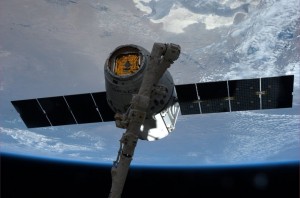
This image of SpaceX Dragon grappled by Canadarm2 on 20 April 2014 was sent down by Flight Engineer Steve Swanson to Instagram with the message, “We have a Dragon. All is good.” Image Credit: NASA
A NASA photo shows Dragon 3 being captured by the robotic arm. It is then hauled in and berthed. This is different from ATV, Progress and Souyz, which all fly in and dock more or less autonomously using the same Russian-designed docking system.
I am also packing supplies since I am going first to Toulouse and then on to to Kourou where I will work on the launch campaign for a couple of weeks.
22-25 April Start of launcher activity, FAR, CoFR , JORR
22 April marks the start of the Ariane launcher campaign in Kourou.
Launcher preparation is done in two buildings, the BIL and the BAF. The BIL is the Batiment Integration Lanceur, and is where the central stage is installed on the launcher table and the two boosters (filled with solid fuel) are connected to it – together with myriad other, necessary preparation activities.
Once it is ready, the entire table, with the launcher on top, goes on a dedicated rail track to the BAF, which is the Batiment Assemblage Finale. When ATV is ready to be integrated (around 23 June, according to current planning), it is placed in a special container, driven over to the BAF and then hoisted on top of the launcher. The remaining activities, including late cargo loading, take place on top of the launcher inside the BAF.
In Europe, we remain busy reading the FAR documents, and preparing the Joint Operations Readiness Review set for Friday, 25 April (details in a separate blog post – Ed.).
During the Mission Management meeting on 23 April, I finalise the ATV-5 EST Readiness Report and also manage to get it signed. The EST is already prepared for the mission. Still, there is time for a few more simulations, a few more procedural updates, a few more anomalies to be resolved, a few more items to be checked and then – of course – the manning needs to be prepared.
Summer vacations are compromised, at least for some of us. Flexibility is the keyword these days! It will be a long mission but we should enjoy it, there won’t be any more.
Getting ATV ready for launch is like running an obstacle course…
– CB

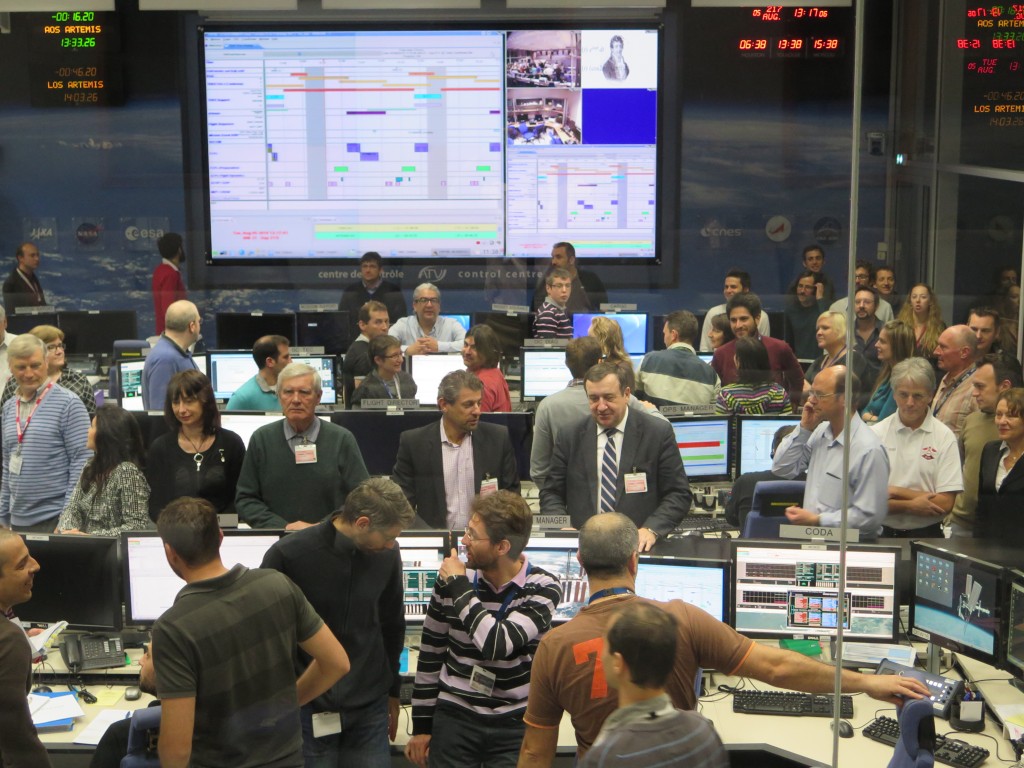
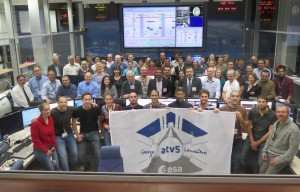
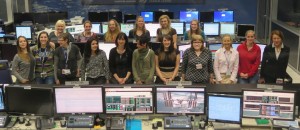
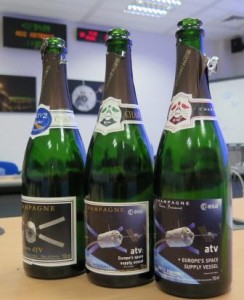
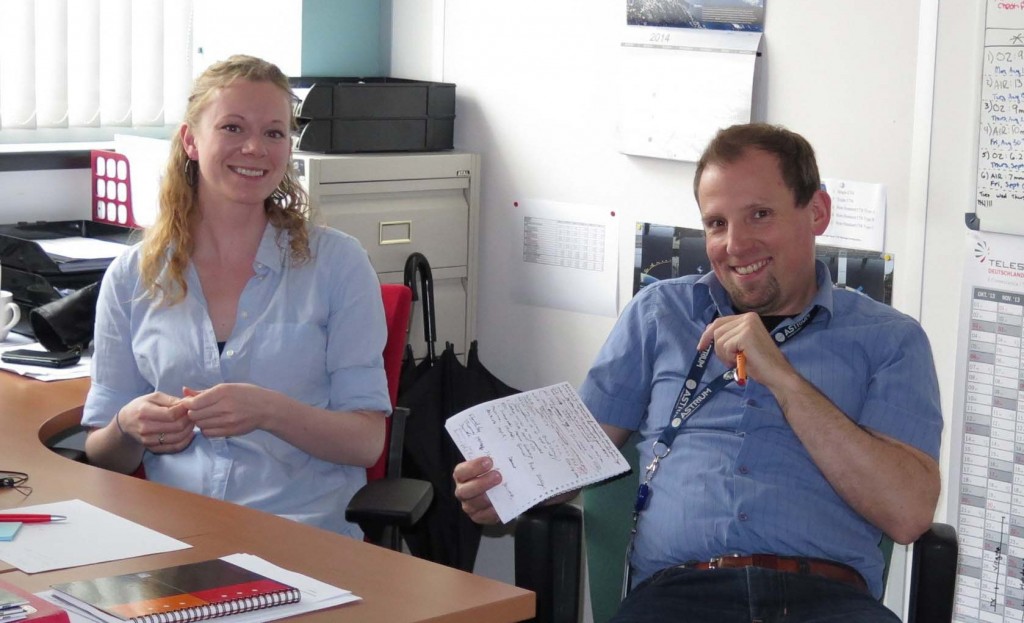

 Automated Transfer Vehicle page
Automated Transfer Vehicle page ATV blog archive
ATV blog archive
Discussion: no comments